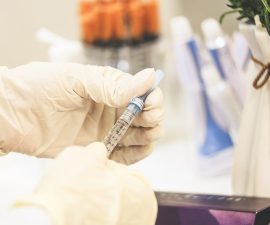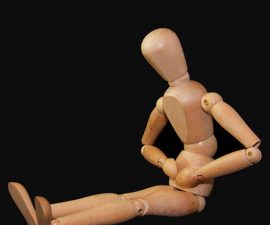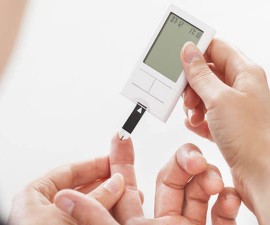… Continued …
High blood sugar (hyperglycaemia)
The problem of getting so thirsty in diabetics starts from their poorly-controlled high blood sugar. Again, hyperglycaemia is the key for diabetes complications.
High concentration of glucose in the bloodstream can affect a number of different organs in the body, including the kidneys. When the body fails to regulate the normal blood sugar level, the kidneys are forced to work harder to remove excess glucose from bloodstream – and you’ll pass more urine.
Frequent urination
When your body’s trying to reduce excess glucose through urine, frequent urination leaves your body wanting to replace the water you’re losing. The brain sends message to hypothalamus and activates thirst center, and you feel thirst.
Thirst and frequent urination in diabetes may come together with other symptoms such as feeling so tired (fatigue), increased hunger, or blurred vision.
Here is brief summary of why many diabetics can get so thirsty:
- Diabetes causes high amount of glucose (sugar) in the bloodstream.
- High blood sugar makes the kidneys work harder to pass excess sugar out of the body. As a result, you urinate more often!
- Frequent urination makes you lose more water, which means you’re running low on water.
- To make up for the water you’ve lost, your brain activates the thirst center in hypothalamus and then you feel thirsty.
Kidney damage
You have two kidneys made up of many tinny blood vessels called nephrons. These tinny blood vessels are essential to help filter blood and remove wastes from bloodstream.
Chronic episodes of high blood sugar in diabetics can hurt kidneys. As mentioned before, the kidneys will filter too much blood if you have high amount of glucose in the bloodstream, making them work harder. Overtime, this may lead to serious kidney damage.
In fact, kidney disease is common in diabetics. And poor kidney function can also lead to excessive thirst.
Diabetic ketoacidosis
In severe case, thirst in diabetes may signal a condition called diabetic ketoacidosis. It is a serious diabetes complication that can be a potentially life-threatening condition. It occurs when the body breaks down fat for the main source of energy, because there is a lack of insulin or the body cannot use glucose for energy.
This breakdown of fats for alternative source of energy releases by-product called ketones (potentially harmful for the body). This is an emergency condition – seek help immediately if you experience some of the following diabetic ketoacidosis symptoms, particularly true if your self-testing shows a high ketone or blood glucose level:
- Getting so thirsty.
- You pass large amounts of urine.
- Weakness and tiredness.
- Feeling sick.
- Breathlessness (shortness of breath).
Treatment options
The treatment is dependent on the cause of your thirst. If it’s linked to your diabetes, control your blood sugar as well. Remember, poorly-controlled high blood sugar is the main reason behind diabetes complications including thirst and frequent urination!
Check your blood sugar (see in here for the normal blood sugar targets for people with diabetes)! If it is quite high, some medications are available to help restore it back to normal.
Work together with your healthcare provider and follow the treatment plan! Currently, diabetes has no cure, but it’s manageable. Fortunately, some lifestyle measures can also help a lot to control it.
- https://www.nlm.nih.gov/medlineplus/ency/article/003085.htm
- http://www.diabetes.co.uk/body/kidneys.html




